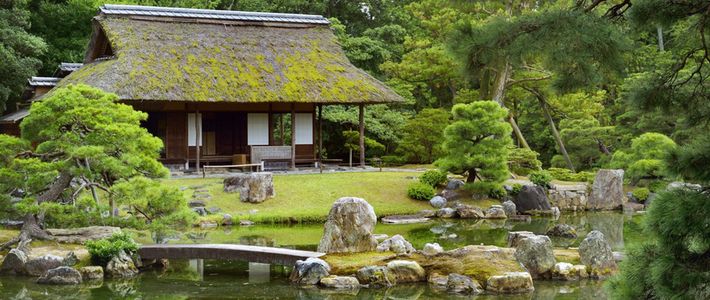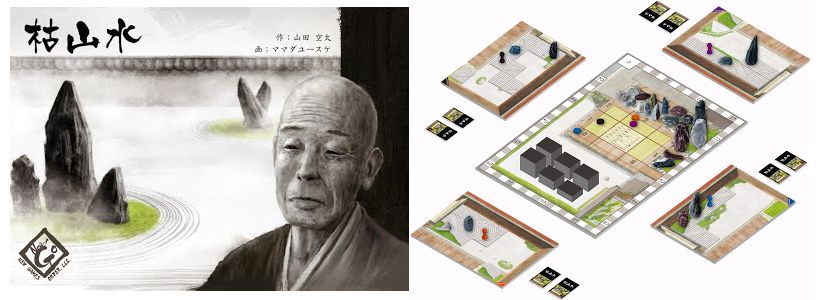
Japanese Gardens
Culture- English
- 日本語
- 简体字
- 繁體字
- Français
- Español
- العربية
- Русский
An Expression of Nature
Traditional Japanese gardens are places of peace and quiet contemplation. They are characterized by curves and asymmetry, with designers seeking to create an expression of nature through an artful combination of trees, flowers, rocks, and water. The aim is not to achieve a perfect reproduction of natural views, but to build reduced-scale versions of idealized landscapes.
In kaiyūshiki (strolling-style) gardens, which incorporate various traditional elements, visitors walk along paths surrounding a large central pond. Artificial hills, islands, bridges, pavilions, large rocks, and other features are used to represent famous scenes from around the country.
The charm of Japanese gardens lies in the views that change when seen from different perspectives and during different seasons or times of day.
 A garden centered on a large pond.
A garden centered on a large pond.
Three Famous Gardens
The first Japanese gardens are thought to have been constructed in the Nara period (710–794). From around the tenth century, many temples built jōdo (pure land) gardens, based on Buddhist descriptions of paradise. In the Muromachi period (1333–1568) karesansui, or “dry mountain stream,” gardens flourished at Zen Buddhist temples. They use rock, sand, and gravel to represent land and water. Other typical styles include the roji or chaniwa (tea gardens) attached to teahouses and the strolling gardens built by feudal lords within their castle or mansion grounds. And gardens have continued to be built by private landowners, public facilities, and hotels into the modern era.
Today most of the great gardens belonging to feudal lords are designated cultural properties that are open to the public and attract many tourists. Many famous gardens are concentrated in Kyoto, the former capital and home to the aristocracy, which also has many temples with spacious grounds.
Japan’s “Three Famous Gardens” are said to be Kenrokuen in Kanazawa, Ishikawa Prefecture, Kōrakuen in Okayama, Okayama Prefecture, and Kairakuen in Mito, Ibaraki Prefecture. These extensive green spaces were all built by feudal lords in the Edo period (1603–1868) and can be enjoyed throughout the year.
Follow the Rocks’ Desires
Rocks are an essential feature in a Japanese garden. The famous guide Sakuteiki (Treatise on Garden Making), written at some point in the Heian period (794–1185), begins by discussing the placement of rocks. According to this guide, the landscaper should not personally make the choice of where to place them, but should ask the rocks themselves where they wish to be laid down and follow their desires.
The rock garden at the Kyoto Zen temple Ryōanji is perhaps the best-known example of the karesansui style. The large rocks are like islands in a sea of gravel. The 15 rocks and stones have famously been arranged so that it is not possible to see more than 14, no matter which angle you look from.
 The famed rock garden at Ryōanji, Kyoto.
The famed rock garden at Ryōanji, Kyoto.
Recently, a garden board game has become an unexpected hit in Japan through its innovative repackaging of tradition. In Karesansui, two to four players aim to score points by building the best garden in line with established design principles.
 Karesansui, a board game produced by New Games Order.
Karesansui, a board game produced by New Games Order.
Japanese gardens reflect traditional philosophical and religious perspectives about the eternal properties of the soul and nature. They are individual worlds that transcend simple beauty through the composition of natural elements. Enter one of these green islands of calm from the bustle of the city and it feels like you are stepping into a small universe.
See also:
Real Japanese Gardens
Japanese Gardens Outside Japan
(Banner photo: the Katsura Imperial Villa in Kyoto.)
